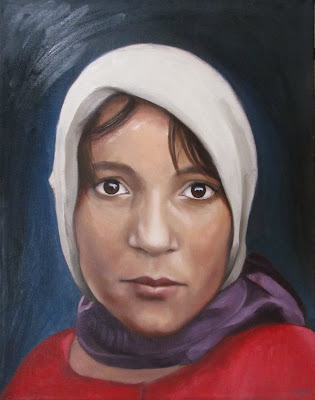
Then Sings My Soul
By Tom Wachunas
“The world will never starve for wonder, but only for want of wonder.” –G.K.Chesterton-
“Nature is too thin a screen; the glory of the omnipresent God bursts through everywhere.”
-Ralph Waldo Emerson-
There have been moments in my life when I felt - standing with wordless wonder in the presence of mountains, or feeling my face gently slapped by wind-blown ocean water, or walking beneath the verdant, sun-dappled canopy of a towering pine forest – that I was actually in the mind of God. I’m fairly convinced we’ve all had such encounters at least one time or another – or should. I feel blessed to have had many.
Another blessing has been taking vicarious pleasure in Nature via the art of well-traveled photographers who seek out the pristine, transcendent grandeur of our physical planet. And so it is that in that same vein I feel blessed yet again to have seen the current exhibition of photographs by Portland, Oregon photographer Rick Canham, on view in both the Student Center and the Advanced Technology Center at Stark State College. His show is called “Brief Moments in Light,” and it is indeed, in a word, wondrous.
This magnificent collection of images demonstrates Canham’s 30 years of experience in purely seeing and framing the sheer power, vitality, and palpable grace of his subjects. Aside from his meticulous attention to color balance and print density, he doesn’t employ any digital trickery. Instead, he brings a painterly intuition to just the right time and place - drawing, so to speak, with light, texture, and sumptuous color. For Canham, this combination of disciplined eye, technical prowess (he does all his own color darkroom printing), and fortuitous timing has produced invariably breathtaking declarations of his clear reverence for, and awe of, earth, water, and sky.
It’s important to remember that photographers, like painters, make aesthetic decisions – they choose what formal elements will occupy the picture plane. In that, Canham is a consummately thoughtful organizer of the picture plane. He can beguile us with abstract, even minimalist essences, as in the haunting and simple “The Vivid Edges of a World,” wherein the soft alpen glow of White Sands National Monument in New Mexico seems indeed otherworldly. Many other scenes are more muscular, even heroic in their composition - spectacular blendings of intricate, sharp textures of earth and foliage against larger, strongly defined rock forms, as in the majestic arched symmetry of “A Moment When Something Sacred Is Revealed,” from Utah’s Zion National Park. His close-ups of undulating sandstone formations in the Colorado Plateau are utterly hypnotic. Still others are more poetic, impressionistic panoramas, both serene and churning, immersed in fog or sun-drenched ocean mists, as in the golden “The Great Sea Stirs Me,” where the crests of violent waves glimmer as if sprinkled with tiny jewels.
Our history is rich with philosophers and artists who have wisely said, in various ways, that Nature is God’s art. As I’ve mentioned several times in the past, I think that when we humans make our own art (and in particular, re-presenting Nature), we are, consciously or not, noticing the remnant spark of God’s primordial act of love – his creation – thus receiving it with joy. More important, one need not be an artist to be touched by Nature’s intrinsic power to elicit wonderment. In lieu of witnessing first- hand the myriad geographic gems that crown this planet, artistic masterworks that commemorate them can go far in keeping us connected to genuine awe.
This show is bursting with such works. And while I’m not certain of Rick Canham’s specific religious leanings, I don’t really need to be. The titles of his pictures very often indicate that he senses a humbling spiritual ethos, and I suspect he has more than just an inkling that a higher power had a hand in making these scenes possible in the first place. He’s an eminently accomplished purveyor and editor of visions that are inspiring in their unspeakable beauty, and for that I’m deeply grateful. Beyond their technical and compositional excellence, his photographs do remind me that there is God, I’m not Him, and He’s available for intimate conversation when I behold the wonders of His art.
Photo: “A Moment When Something Sacred Is Revealed” – by Rick Canham, on view THROUGH NOVEMBER 12 at Stark State College Student Center and the Advanced Technology Center, 6200 Frank Avenue, North Canton. Public viewing hours are 8 am – 8 pm Monday to Thursday / 8 am – 4 pm Friday / 8 am – Noon Saturday. Information at (330) 494 – 6170, ext. 4319, or email rpriest@starkstate.edu






